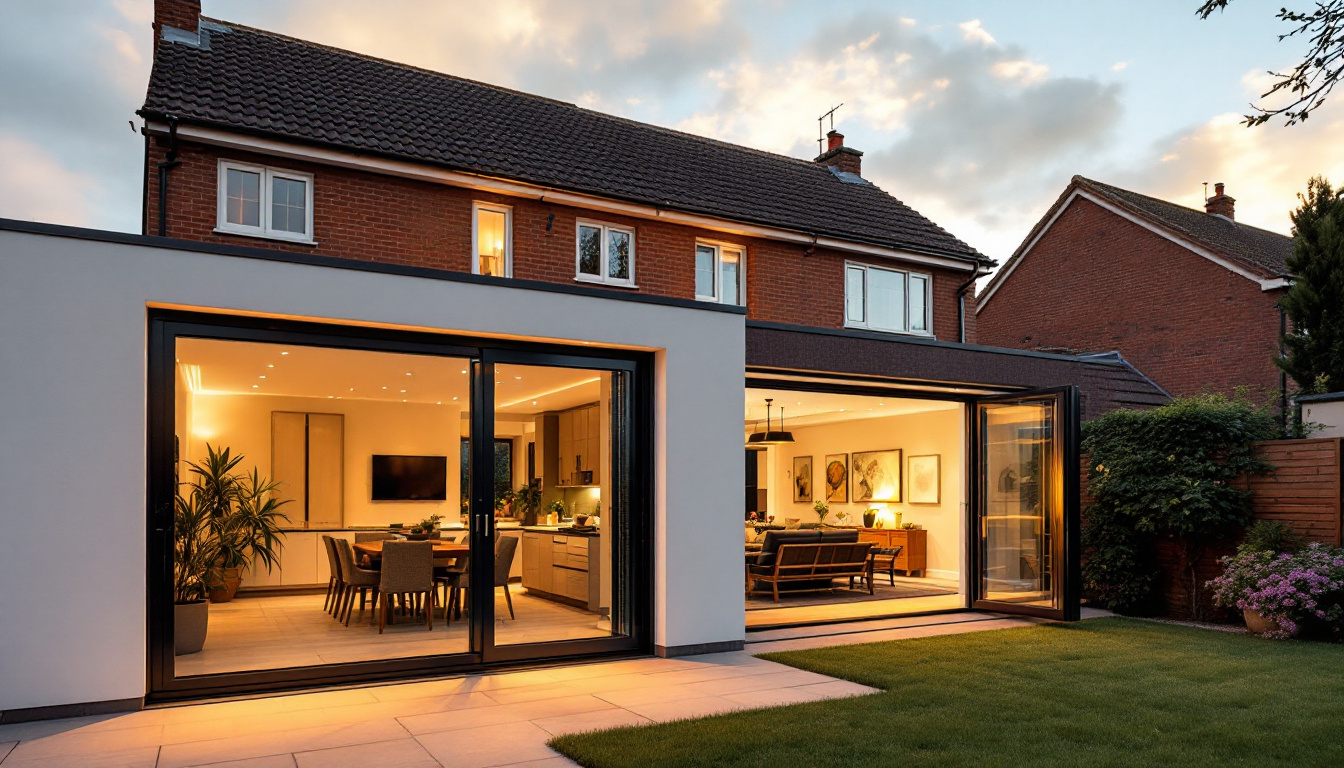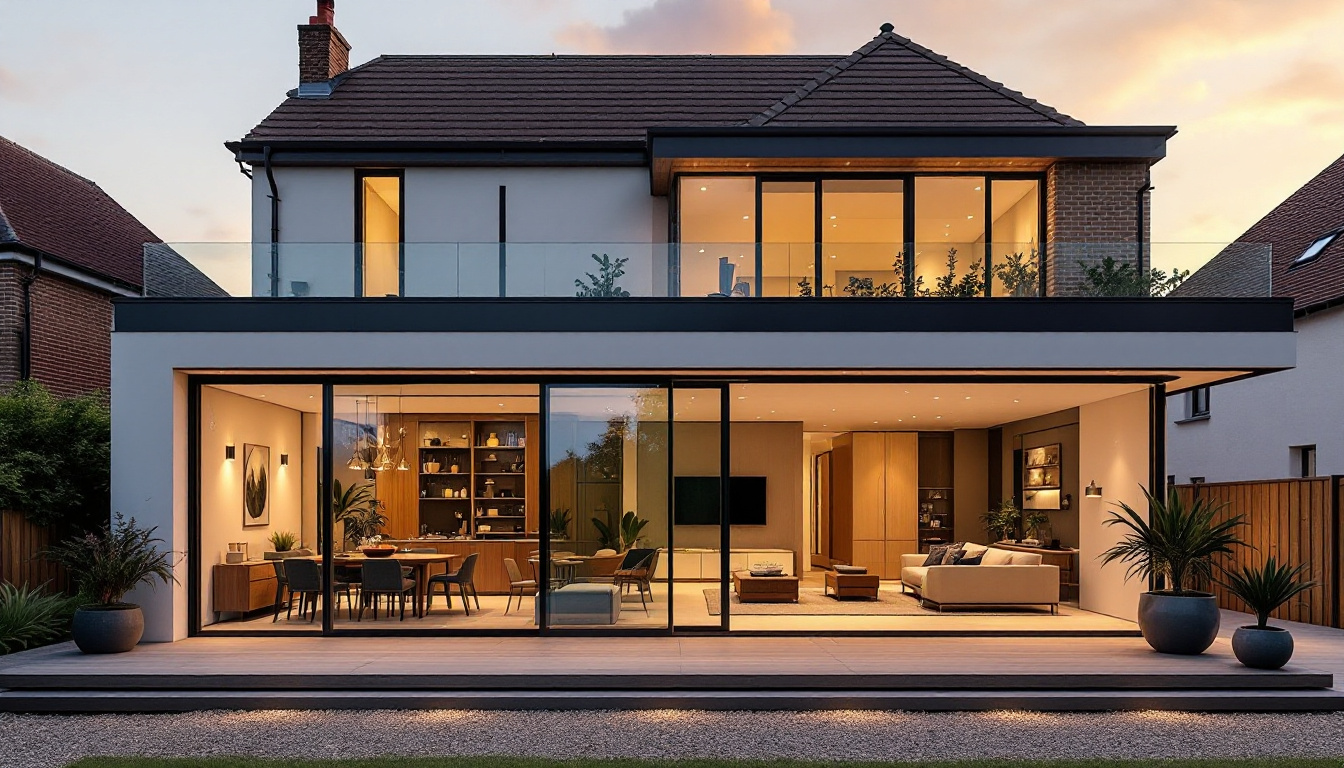How Much Does a Rear Extension Cost for a Detached House?
Adding a rear extension to a detached house is an exciting way to increase living space, improve functionality, and potentially boost your property's value. However, understanding the costs involved can feel overwhelming. From planning permissions to material choices and regional price differences, many factors influence the final bill. This guide breaks down what you can expect to pay for a rear extension in the UK, helping you make informed decisions for your home improvement project.
Understanding the Basics: What Influences Rear Extension Costs?
The cost of a rear extension varies widely depending on several key factors. Typically, you can expect to pay between £1,500 and £2,500 per square metre for a standard rear extension in the UK. However, this range can shift based on the complexity of the build, the quality of materials, and where you live.
Structural complexity is a major contributor. For example, if your extension requires underpinning, dealing with tricky ground conditions, or integrating with unusual rooflines, costs will rise. Similarly, the level of finish you want—whether basic plaster and paint or high-end fixtures—affects the price significantly.
Labour rates also vary by region. Areas like London and the South East tend to have higher costs due to increased demand and living expenses. So, if your detached house is located in these regions, expect to pay a premium compared to other parts of the UK.
Single-Storey vs. Double-Storey Rear Extensions
When considering a rear extension, it’s important to distinguish between single-storey and double-storey options. A single-storey extension is generally more affordable and quicker to build, but a double-storey extension offers more space and can add greater value to your home.
Recent data suggests that a double-storey rear extension typically costs between £1,200 and £2,200 per square metre. This slightly lower starting point compared to single-storey extensions reflects the economies of scale in building upwards, but the overall project will still be more expensive due to its increased size and complexity.
Moreover, the design and architectural style you choose can significantly impact costs. A contemporary design with large glass panels and open-plan layouts may require more expensive materials and skilled labour, while a traditional style might be less costly but could still involve intricate brickwork or roofing that drives up the price. Additionally, planning permissions and building regulations can add another layer of complexity and expense, particularly if your extension needs to adhere to specific guidelines set by local councils.
Another important consideration is the potential for disruption during the construction process. Depending on the size and scope of the project, you may face noise, dust, and limited access to your garden or home for several weeks or even months. This can affect your daily life and may require you to make temporary arrangements, such as finding alternative accommodation or adjusting your routines. Understanding these factors can help you better prepare for the financial and logistical implications of your rear extension project.
Additional Costs to Consider Beyond Construction
Building costs are just one part of the equation. Planning permission is often required for rear extensions, especially if you’re adding significant space or altering the building’s footprint. In England, submitting a planning application costs around £206. While this might seem minor compared to construction costs, it’s an essential step that can impact your timeline and budget.

Other potential expenses include architectural drawings, structural engineer reports, and any necessary surveys. These professional fees ensure your extension is safe, compliant with regulations, and tailored to your needs.
Long-Term Value and Return on Investment
One of the biggest advantages of building a rear extension is the potential increase in your property’s value. Well-executed extensions can add between 10-15% to your home’s worth, which is significantly higher than other home improvements like conservatories, which typically add 5-7%.
For example, a kitchen extension not only provides extra space but also enhances functionality, making your home more attractive to future buyers. This can be a smart financial move, especially when compared to the cost and hassle of moving to a larger property.
Regional Variations: How Location Affects Your Budget
Location plays a crucial role in the cost of rear extensions. London and the South East are known for higher labour and material costs, which can push your budget upwards. In contrast, regions outside these areas may offer more competitive pricing.
It’s important to get local quotes and factor in regional market conditions when planning your project. Costs can also fluctuate based on the availability of skilled tradespeople and supply chain factors, so timing your build carefully can help manage expenses.
Tips for Budgeting Your Rear Extension Project
Planning your budget carefully is key to a successful extension. Start by defining the size and scope of your project clearly. This will help builders provide accurate quotes and avoid unexpected costs later.
Consider the quality of materials you want and how they will impact both upfront costs and long-term maintenance. For instance, investing in durable finishes might cost more initially but save money down the line.
Finally, always include a contingency fund—around 10-15% of your total budget—to cover unforeseen expenses. Home extension projects often encounter surprises, from hidden structural issues to changes in planning requirements.
Choosing the Right Builder and Getting Multiple Quotes
Finding a reputable builder with experience in rear extensions is essential. Ask for references, check previous work, and ensure they are familiar with local regulations. Getting multiple quotes can help you understand the market rate and negotiate better deals.
Remember, the cheapest quote isn’t always the best. Quality workmanship and reliable timelines often save money in the long run by avoiding costly repairs or delays.
Final Thoughts: Is a Rear Extension Worth the Investment?
Adding a rear extension to your detached house is a significant investment but one that can transform your living space and increase your property’s value. Costs typically range from £1,500 to £2,500 per square metre, influenced by factors like design complexity, location, and materials.

By understanding these variables and planning carefully, you can create a beautiful, functional space that meets your family’s needs and adds lasting value to your home. Whether you opt for a single-storey or double-storey extension, the key is to balance your budget with quality and long-term benefits.
With the right approach, a rear extension can be a rewarding project that enhances your lifestyle and your property’s market appeal for years to come.


